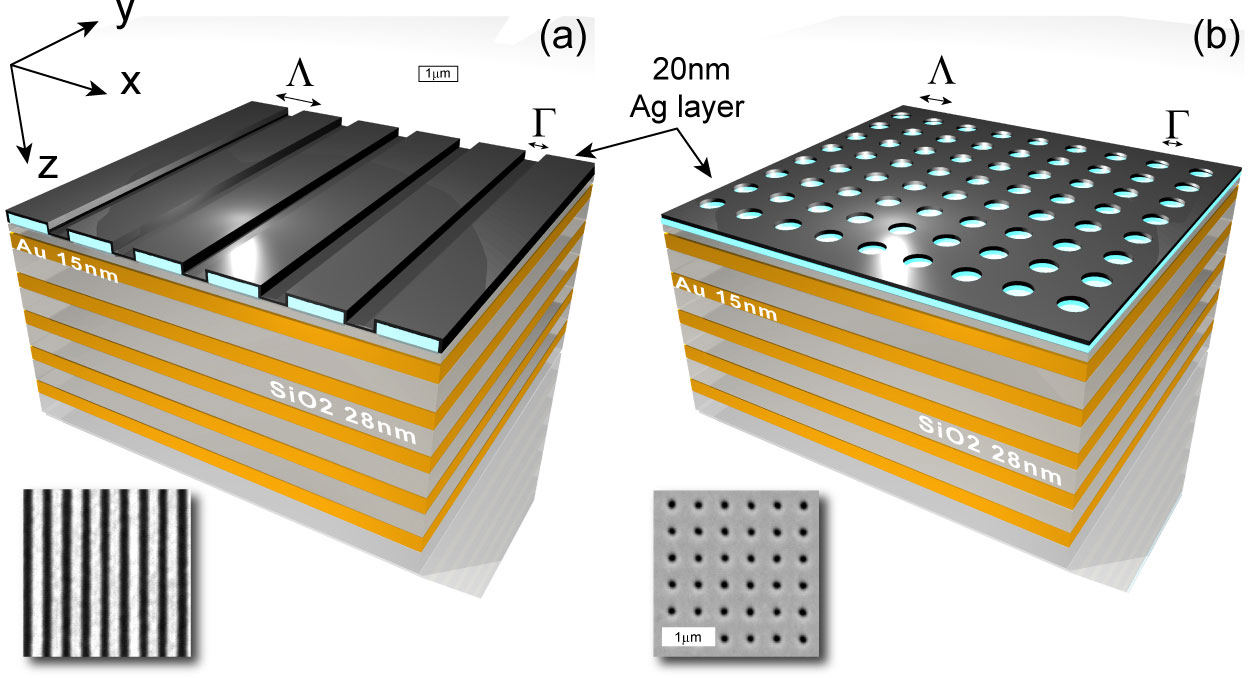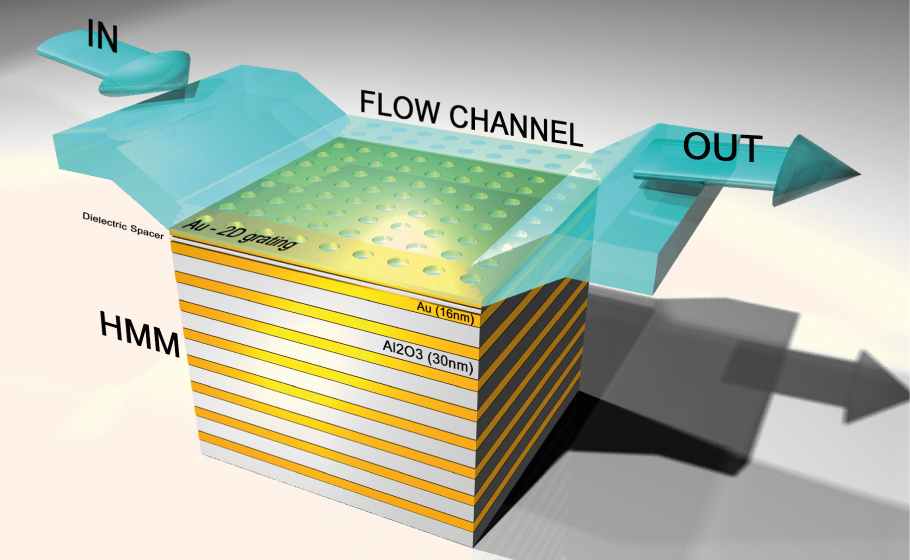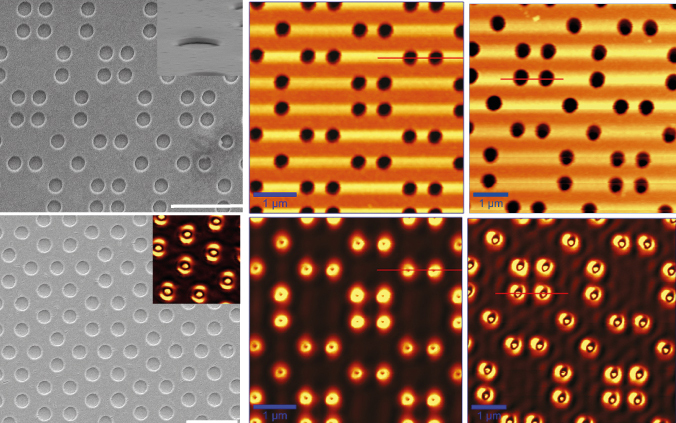Metamaterials

Hyperbolic Metamaterials (HMMs)
Hyperbolic metamaterials (HMMs) are non-magnetic extremely anisotropic layered nanostructures with optical response that cannot be found in nature. They possess an open hyperboloid iso-frequency surface. This permits to support highly confined wavevector modes (high-k modes) in addition to surface plasmon modes within the structure due to hyperbolic dispersion.
Being characterized by hyperbolic dispersion, HMMs support surface plasmon polaritons (SPPs) as well as highly confined bulk plasmon polaritons (BPPs). A periodic metal/dielectric stack (HMM) supports bulk plasmon modes, which are the entire family gap plasmon modes of the multilayer. These high-k modes are conventionally known as volume plasmon polaritons (VPPs) or bulk Bloch plasmon polaritons (BPPs). BPPs are propagating waves inside the multilayer whereas decay exponentially outside the structure.

Extremely Sensitive Bio-Sensors based on HMMs

Best paper in this field
Extraordinary Effects in Quasi-Periodic Gold Nanocavities
Plasmonic quasi-periodic structures are well-known to exhibit several surprising phenomena with respect to their periodic counterparts, due to their long-range order and higher rotational symmetry. Thanks to their specific geometrical arrangement, plasmonic quasi-crystals offer unique possibilities in tailoring the coupling and propagation of surface plasmons through their lattice, a scenario in which a plethora of fascinating phenomena can take place. We investigate the extraordinary transmission phenomenon occurring in specifically patterned Thue−Morse nanocavities, demonstrating noticeable enhanced transmission, directly revealed by near-field optical experiments, performed by means of a scanning near-field optical microscope (SNOM). SNOM further provides an intuitive picture of confined plasmon modes inside the nanocavities and confirms that localization of plasmon modes is based on size and depth of nanocavities, while cross talk between close cavities via propagating plasmons holds the polarization response of patterned quasi-crystals.



